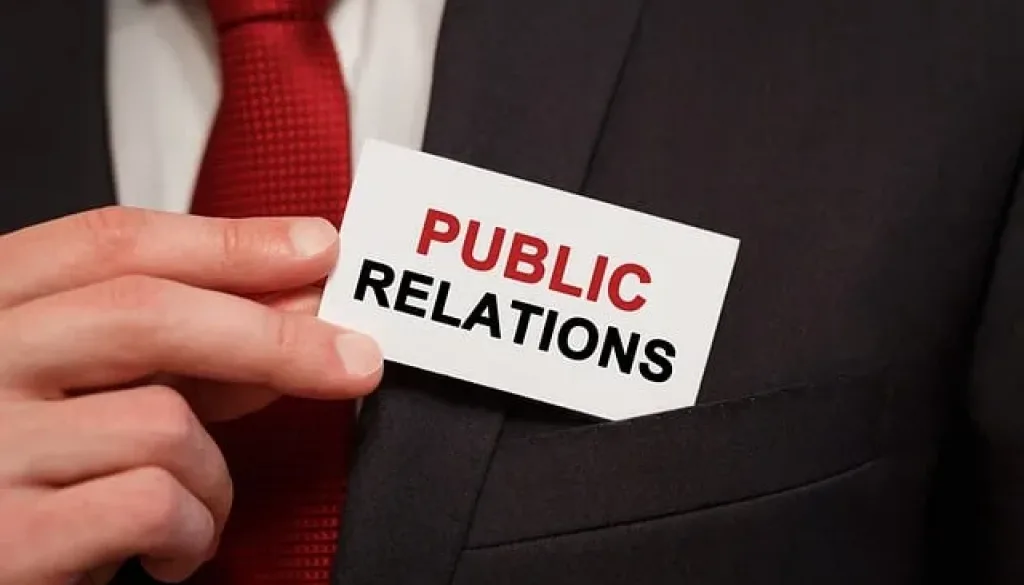8 Proven Strategies from a Former Journalist to Improve Public Relations
I’ve been remembering fondly my former career as a news journalist lately. In the years that’ve gone by, I still cherish relationships with many great community members who not only became great friends, but also helped me lay a foundation for an award-winning career by supplying wonderful story opportunities for years.
The community leaders who most frequently earned prominent coverage for their initiatives did so because they were skilled at relationship-building. They did their research. They read our publication. They identified me as a preferred journalist, learned how to reach me directly, and opened a mutually beneficial dialog that piqued my interest even in the most frazzled 70-hour work weeks.
Funny, the most adept at these public relations tactics weren’t even PR professionals. They were school teachers, small business owners, nonprofit leaders and others short on public relations training but high on passion for their cause.
Before we delve into their tactics, let’s explore the true value of public relations and earned media coverage.
Public Relations: Paid Media vs. Earned Media Coverage
That’s the operative phrase: earned media. By definition, it’s really quite simple. You EARN coverage by a reputable third party – typically a well-established news outlet.
Contrary to politically charged drivel, the media remains a credible resource for for-profit and nonprofit brands alike aiming for positive coverage and thought leadership. OK, so admittedly media trust has fallen – partially because of that drivel has snowballed out of control. That said, 58% of consumers still trust editorial content conveying brand promotion. Not an impressive statistic? Compare that to paid advertising on:
- Television (47% trust)
- Social media platforms (36%)
- Online video (36%)
- Mobile display ads (33%)
- Text ads (29%)
Yet paid advertising is highly prioritized for its ability to hone in on target audiences specifically. There’s most certainly value in that. That’s why we’re advocating for BOTH EARNED AND PAID MEDIA in a well-rounded professional communications strategy.
How To Be Successful in Making Public Relations Pitches
Still curious what worked so well for community leaders making PR pitches during my time as a journalist?
These were people like Evelyn Sabina from Dream It. Do It.-Western New York, who nurtured a love of STEAM subjects for regional school students to find fruitful careers in advanced manufacturing. And Christina Lopez and Mike Marvin from Boundless Connections, who compelled kids and adults alike to explore technology. And there are far too many local law enforcement officials to name who protected and served by announcing big arrests, high-profile court cases and other public safety initiatives.
Their earned media pitches worked so well because they did their homework and made an effort to build relationships with me that met our common needs to inform and help the public. Which segues nicely to our first tip.
1. Shift Your Public Relations Mindset From Selling to Helping
Tens of thousands of press releases found their way to my email inbox and news desk. I take great pride in the fact that 95% ended up in the trash. Why? Because I saved the readership from wasting their time on sales pitches with zero news value.
The remaining 5%? Those were helpful and informative. Those were published. It was refreshing to encounter a press release with true newsworthiness that focused not on the greatness of the promoting organization, but rather on the benefit to the news consumer. If it helped me to help the reader, it passed the litmus test.
So instead of pushing your agenda, focus on providing additional info that genuinely adds value to journalists by adding value to their news consumers. This approach not only reduces the perceived aggressiveness, but also establishes you as a trustworthy resource.
Sources who did this well were not only received warmly in my inbox, but over time, I began to approach them for fresh news and continuing coverage.
2. Perfect Timing: The Art of Follow-Up
Journalists work one of the most stressful and hectic jobs in the world. It’s easy for press releases and other media pitches to fall through the cracks.
Timing is everything in the world of media pitches. Follow up within 48 hours of your initial pitch to stay top of mind. Just a quick bump – nothing too urgent or angry for a lack of response. Be understanding and respectful of their time, or you’ll never see print or air time again.
If there’s no response, a well-timed second follow-up after five business days can reignite interest. But avoid repetition. If you’re not as familiar with the journalist(s), send follow-up messages that offer unique value or context, diverging from the content of your initial pitch.
3. Express Urgency to Resurrect Interest
For initially receptive journalists who seem to have gone silent, introduce “urgency buttons” in your follow-up. Phrases like “deadline approaching” or “time-sensitive opportunity” inject a sense of urgency, prompting them to revisit your pitch.
But use this tactic judiciously to maintain authenticity and credibility. Overused, the whole “last-minute” or “time’s running out” appeal comes across very salesy. Experienced journalists can spot that grift a mile away.
4. Follow-Up Relationship Building
Who would’ve thunk it? We’re back at relationship-building. Well, that’s because it’s THAT important. Shift your perspective on follow-up success. It’s not just a means to secure placements, but an opportunity to nurture relationships with journalists for continued coverage for years to come.
My best PR sources became partners in communication. After initially inviting me to witness their cause – building a mutual understanding of its news value and importance – those sources made their appreciation known. At the very least, they’d follow up with an email thanking me for the coverage. Others went all out with special gifts, dinners and other tokens of appreciation.
Of course, there’s something to be said for journalistic distance and objectivity. But there are no rules against having lunch with a friend. Consistent professionalism – coupled with value-driven interactions and interacting as human beings – positions you as a trusted resource.
5. Personalization is Paramount
Avoid a one-size-fits-all approach. Personalize your follow-ups. Reference previous work or articles by the journalist, demonstrating that you’ve done your homework. Tailor your messages to their interests and beat, reinforcing the idea that your pitch aligns with their expertise.
6. Craft Compelling Subject Lines
Subject lines matter. In a journalist’s crowded inbox, a compelling subject line can make the difference between an opened email and being relegated to the spam folder.
Which email subject would you be more likely to open?
“New Press Release”
Or
“High School Science Club Plans Rocket Launch”
The answer is pretty obvious. Also, if possible, specifically identify your organization in the subject line or preview text so they recognize the email as from a trusted source. Craft subject lines that intrigue, hint at value and spark curiosity. But, again, avoid the gimmicky, time-sensitive nonsense unless it’s absolutely necessary. (Helpful hint: email servers tend to flag such subject lines for spam.)
7. Multichannel Approach: Beyond Email
Explore a multichannel approach to follow-up. While email is a primary mode of communication, consider reaching out via social media or even a brief phone call. Adapt your strategy based on the journalist’s preferred mode of interaction.
As a journalist, I was always very active on Twitter (now X). Many PR pitches saw the light of day thanks to someone reaching out via DM with a link or tip.
8. Use Technology Wisely: ChatGPT for PR Pitch Writing
Of course, artificial intelligence wasn’t a thing back in my day as a journalist. Today, technology is your ally, allowing you to create volumes of content like never before.
But beware. While tools like ChatGPT can assist in pitch writing, remember that you, as the PR professional, hold the key to understanding the substance, style, and tone that resonate with journalists. Use technology as a supplement to your expertise, not a replacement.
Successful Public Relations Tactics from a Journalist’s Perspective
Incorporating these advanced strategies into your public relations strategy can elevate your success rates and establish you as a PR professional who not only knows how to pitch but understands the art of building lasting relationships with journalists. Start implementing these tips today and watch your media placements soar.
If you need advice from a seasoned former journalist, feel free to reach out to me here.

President and Founder, Grand River Agency
With over 19 years of diverse experience in print journalism, digital media marketing, and nonprofit administration, Kelsey Boudin founded Grand River Agency (formerly Southern Tier Communications Strategies) in 2020. The agency specializes in offering contract-based strategic communications, content marketing, grant proposals, website design, and public relations services to small businesses and nonprofits. Kelsey’s career spans roles as an editor, content creator, and grant writer, reflecting his expertise in leading successful digital marketing campaigns, securing funding, and executing various projects.




